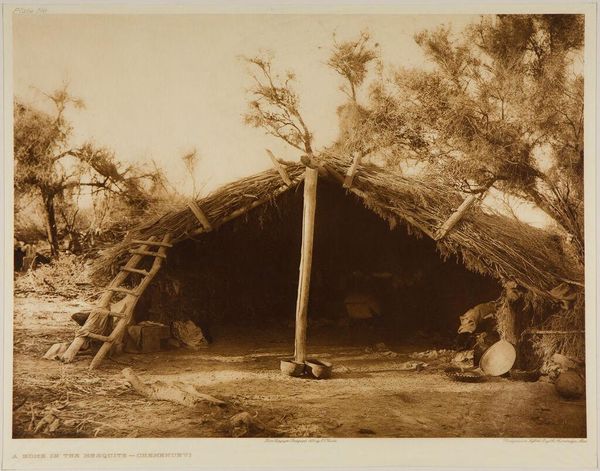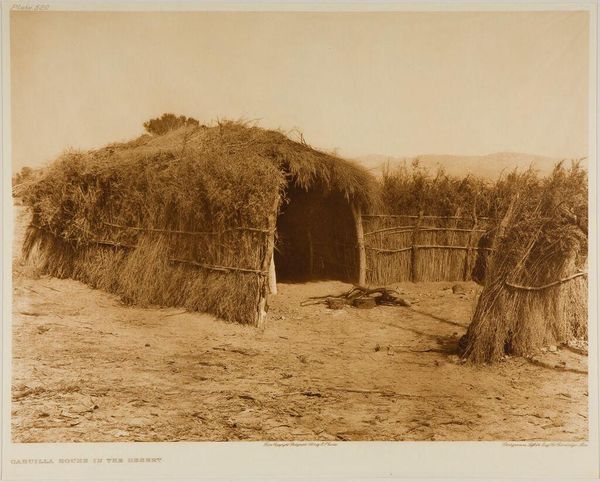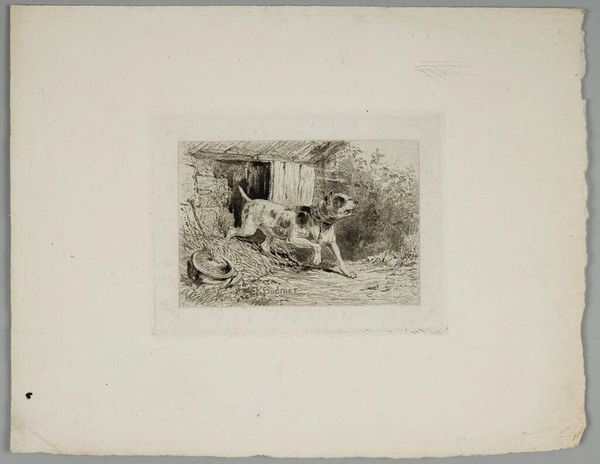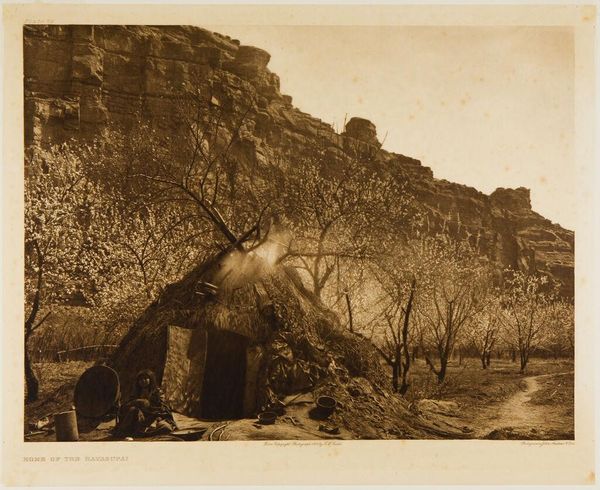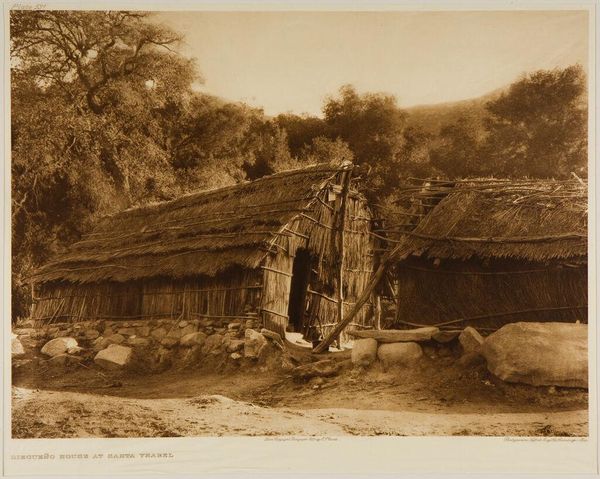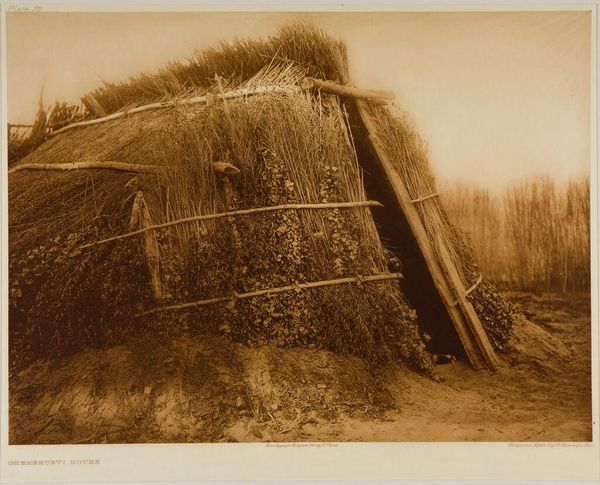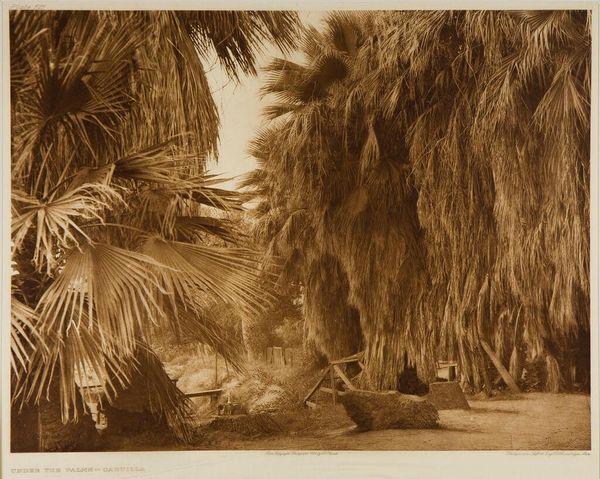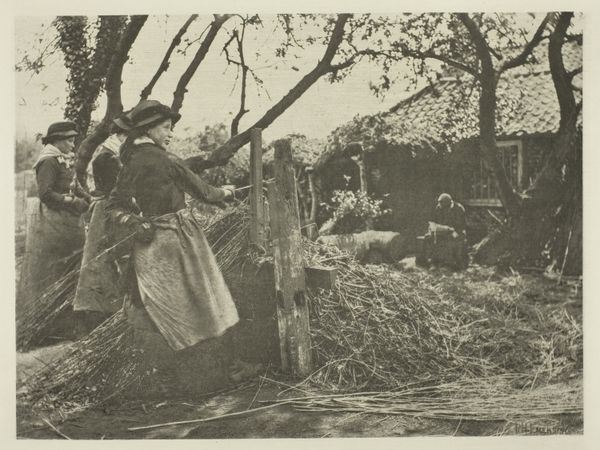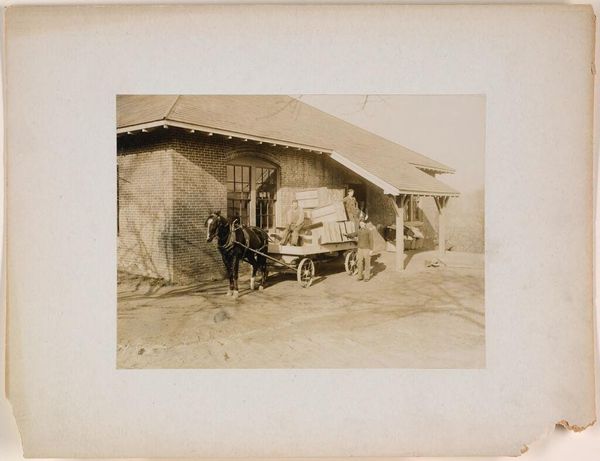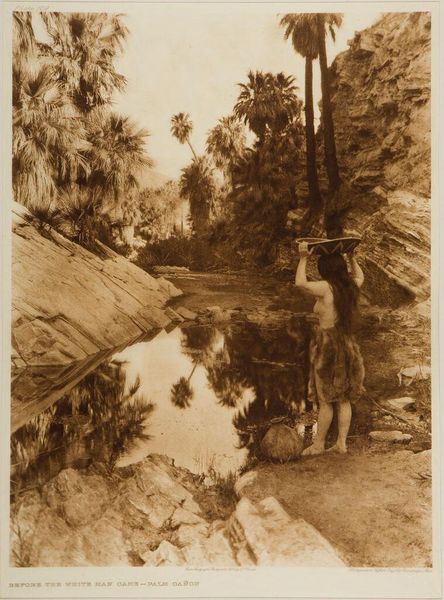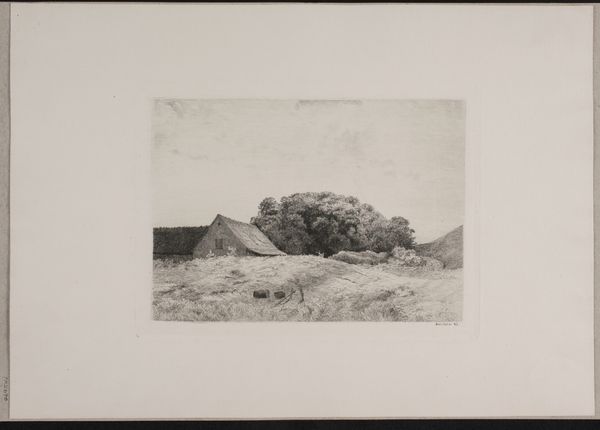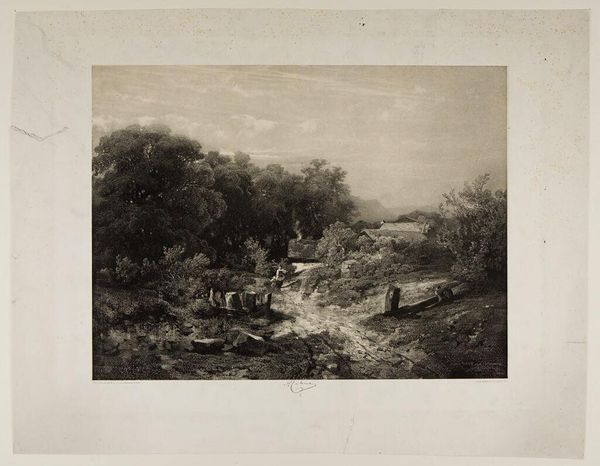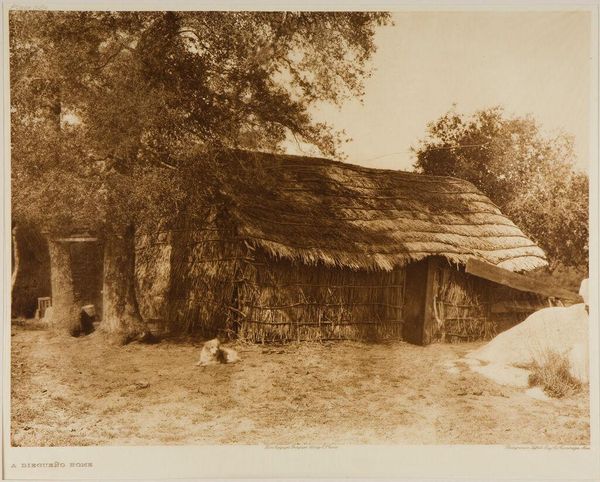
Dimensions: image: 29 x 39 cm (11 7/16 x 15 3/8 in.)
Copyright: CC0 1.0
Curator: Edward Sheriff Curtis’s photogravure, “Diegueño House at Campo,” captures a moment of everyday life. The Diegueño people, also known as the Kumeyaay, resided in what is now Southern California and Baja California. What strikes you about it? Editor: The sepia tones and the woman's posture give it a serene, almost timeless quality. She seems deeply connected to the land and her work. Curator: Curtis’s work is complex. While he sought to document Indigenous life, his photographs are often staged and romanticized, fitting into a larger narrative of the "vanishing race." The composition, with the woman in traditional dress, reinforces this. Editor: It’s crucial to acknowledge that Curtis was not simply a neutral observer. His images were shaped by his own cultural biases and the prevailing attitudes of his time, influencing the public’s perception. Curator: Absolutely. Studying it through a critical lens allows us to consider the broader social and political context of the early 20th century. Editor: It serves as a potent reminder to interrogate the power dynamics inherent in representation and historical narratives.
Comments
No comments
Be the first to comment and join the conversation on the ultimate creative platform.
